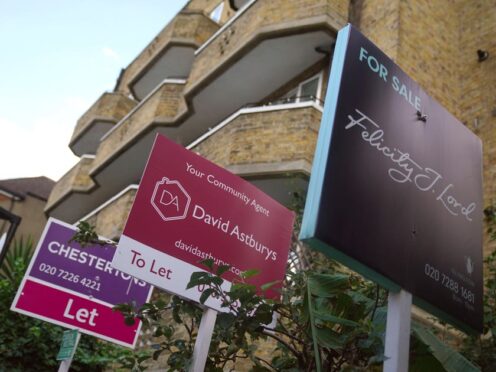
Almost 22,000 rental properties may have been removed from the market in Scotland in the last year, research has revealed, with “anti-landlord rhetoric” from the Scottish Government cited as a reason for the drop.
The Scottish Association of Landlords (SAL) said that such rhetoric, combined with “short-term, ineffective policies” from ministers, was “harming investment in private rented housing in Scotland”.
The comments came as a survey of SAL members carried out in December 2023 revealed that they had removed an average of 6.4% of their properties from the private rental sector last year.
If this reduction was replicated across the sector, some 21,760 homes will have been removed, SAL calculated.

When asked about their reasons for planning to remove homes from the sector, 83% of those surveyed highlighted a “perceived hostility towards landlords from government/politicians”.
Meanwhile, three quarters (75%) expressed concern about rent controls, with a similar number (74%) saying increasing regulation in the sector was a reason for their decision.
The SAL said the fall in the number of available properties to let was the biggest factor contributing to rent hikes, adding it was contributing to Scotland’s “ongoing housing crisis”.
It also warned the situation could get worse – with the SAL membership survey finding more than half (56%) of landlords are planning to reduce their portfolios during 2024 – up from 44% who said they were looking to reduce the number of properties they had last year.
Meanwhile, fewer than one in 10 landlords (9%) are planning on taking on more properties, compared to 13% a year ago.
It comes after the Scottish Government brought in legislation to introduce a rent freeze in 2022 in response to the cost-of-living crisis.
These measures, which are due to end this April, were later relaxed to allow landlords to increase rents by 3%, with this rising to 6% in some circumstances.
The emergency legislation, which was passed by Holyrood, also placed a ban on evictions from being carried out in most situations.
With the legislation coming to an end, tenants’ rights minister Patrick Harvie has announced plans to temporarily change the rent adjudication process until April 1 2025.
This will allow landlords to charge rent increases of 6% or less, provided the total rent is not more than market value.
However, SAL chief executive John Blackwood said that the situation in Scotland was “causing significant harm” as it was “reducing supply and driving up costs for tenants”.
Mr Blackwood said: “Landlords have been warning for the past few years that the combination of anti-landlord rhetoric along with short-term, ineffective policies are harming investment in private rented housing in Scotland.
“These chickens are now coming home to roost as landlords lose confidence and are choosing to exit the sector.
“This is reducing supply and driving up costs for tenants and causing significant harm.
“We have already seen a number of councils point to landlord exits as a reason for increased pressure on their own housing stock and this will only continue in the future.”
Instead of these short-term measures, the Scottish Government must come together with all parts of the sector to encourage investment.
“We need to see a lot more social housing in Scotland, as well as new builds and investment in flexible, high-quality privately rented accommodation.”
Housing Minister Paul McLennan said: “I will be speaking at the CIH Annual Festival and I look forward to speaking with stakeholders on how we can deliver more affordable homes across Scotland.
“The Scottish Government has led the UK in housing by delivering more than 126,000 affordable homes since 2007, over 89,000 for social rent, including almost 24,000 council homes.
“We will invest £556 million in affordable housing in 2024-25, the majority of which will be for social rent.
“The UK Government failed to inflation-proof their capital budget, and this has resulted in nearly a 10% real terms cut in our UK capital funding between 2023-24 and 2027-28.
“Likewise our Financial Transactions budget, key to delivering affordable housing, has been cut by 62%.
“This is on top of the disastrous impact Brexit has had on construction supply chain issues, labour shortages and inflationary pressures.
“In Wednesday’s budget, the Chancellor should reverse this cut, one of our top priorities is to invest in housing if there are to be further funds made available.
“We remain focused on delivering 110,000 affordable homes by 2032 and to support that we will bring forward the review scheduled for 2026-27 to 2024, which will concentrate on deliverability. We are working with the financial community in Scotland, and elsewhere, to boost private sector investment and help deliver more homes.”

Enjoy the convenience of having The Sunday Post delivered as a digital ePaper straight to your smartphone, tablet or computer.
Subscribe for only £5.49 a month and enjoy all the benefits of the printed paper as a digital replica.
Subscribe